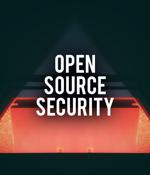Security News

What's more, orchestration platforms like Kubernetes carry additional security considerations, such as securing a cluster's network and API endpoints, which aren't as visible to traditional security tools. Lastly, with deployments growing in scale and complexity, manual security management becomes impractical and security automation - from threat detection to compliance management - is essential.

Here are ten open-source recon tools that deserve to be in your arsenal. Altdns is a DNS recon tool that allows for the discovery of subdomains that conform to patterns.

Fiddler Auditor is an open-source tool designed to evaluate the robustness of Large Language Models and Natural Language Processing models. LLMs can sometimes produce unwarranted content, potentially create hostile responses, and may disclose confidential information they were trained with, regardless of whether they were explicitly asked to do so.

Building on public models like Meta's LLaMa, the open-source community has innovated in ways that allow results nearly as good as the huge models-but run on home machines with common data sets. Much of the modern internet was built on open-source technologies from the LAMP stack-a suite of applications often used in web development.

Public source code repositories, from Sourceforge to GitHub, from the Linux Kernel Archives to ReactOS.org, from PHP Packagist to the Python Package Index, better known as PyPI, are a fantastic source of free operating systems, applications, programming libraries, and developers' toolkits that have done computer science and software engineering a world of good. In cases like that, you can save time by searching for a package that already exists in one of the many available repositories, and hooking that external package into your own tree of source code.

Brian Behlendorf, CTO at the Open Source Security Foundation, shares insights on the influence of his experiences with the White House CTO office, World Economic Forum, and Linux Foundation on leading the OpenSSF and addressing open-source security challenges. Like all software projects, open source software projects are never over-staffed; they are volunteers struggling not just to write the functionality they need but also to fix the bugs they and others find, paying down technical debt and implementing better security practices and tools often fall way behind in priority compared to new feature work and bug-fixing.

A new risk emerges in the digital era, where open-source software has become a fundamental pillar in developing innovative applications. In this Help Net Security video, Henrik Plate, Lead Security Researcher at Endor Labs, discusses the dual-edged nature of open-source software.

Geacon, a Go-based implementation of the beacon from the widely abused penetration testing suite Cobalt Strike, is being used more and more to target macOS devices. Both Geacon and Cobalt Strike are utilities that legitimate organizations use to simulate attacks against their networks and improve defenses, but threat actors have also relied on them for attacks.

Kubernetes Security Operations Center released the first-ever Kubernetes Bill of Materials standard. While the Software Bill of Materials has moved forward to the point of being a formal part of the NIST requirements required by the USA federal government in federal purchases, this requirement falls short of the deployment stage in the application development lifecycle, where Kubernetes into play.

Data theft is the act of stealing data stored in business databases, endpoints, and servers. Wazuh is a free and open source enterprise-ready security solution that provides unified SIEM and XDR protection across several workloads.